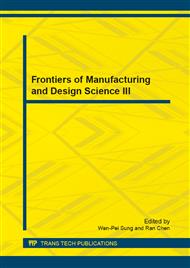p.69
p.73
p.77
p.81
p.86
p.92
p.97
p.102
p.107
Optimization of Supersonic Plasma Spraying Parameters Based on Coating Porosity
Abstract:
In this paper, an optimization experiment was designed to get the optimal performance of supersonic sprayed coating. Response surface methodology based on Box-Behnken design has been used in this experimental design. Input factors were designed with four representative spraying parameters: powder feed rate, spraying power, argon flow rate and hydrogen flow rate. Porosity of NiCrBSi coating, as the only measured response, was applied to estimate the influence of spraying process on the coating performance. Results indicate that porosity is the most sensitive to change powder feed rate, followed by argon flow rate, hydrogen flow rate and spraying power. A minimum porosity of 1.8% was obtained under the optimization spraying parameters.
Info:
Periodical:
Pages:
86-91
Citation:
Online since:
December 2012
Authors:
Price:
Сopyright:
© 2013 Trans Tech Publications Ltd. All Rights Reserved
Share:
Citation:


